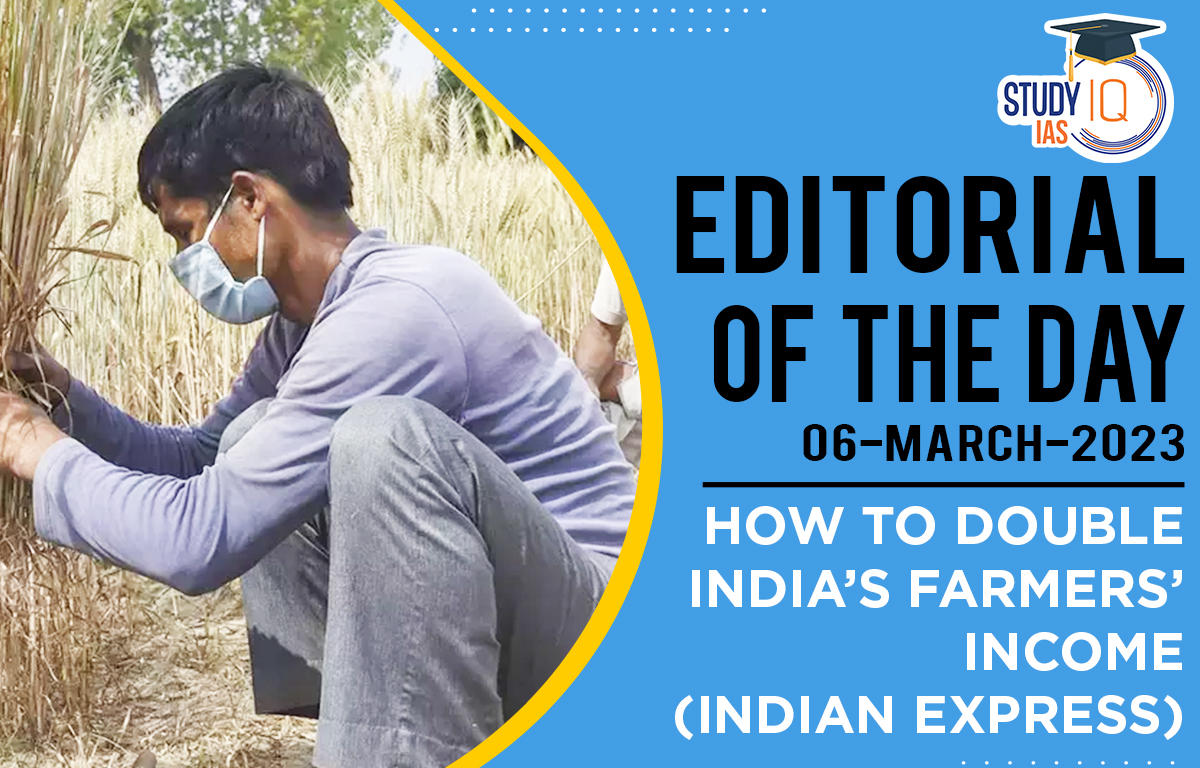Table of Contents
It was in 2016 that the intention of doubling farmers’ income was first floated. As India enters 75th year of Independence, it is time to revisit to see if the dream has been fulfilled.
- Until and unless incomes of farmers go up, India cannot have sustained high growth of overall GDP. Low income of farmers will result in manufacturing sector facing a demand constraint.
- Agriculture sector engages the largest share of the workforce (45.5 per cent in 2021-22). Agriculture also provides food and nutritional security to the people.
- Focusing on agriculture is the right way to ensure long-term high growth of the overall economy.
State Support to the Agriculture Sector in form of Subsidies
- The Union government provides fertilizer subsidy to the tune of more than Rs 2 lakh crore. Despite rise in global prices of urea, the Indian price of urea remained constant.
- Besides the Rs 60,000 crore allocated to PM KISAN, the government provides small and marginal farmers ration of at least 5 kg/person/month through the PM Garib Kalyan Anna Yojana.
- There are subsidies for crop insurance, credit and drip irrigation. States governments give power subsidies in abundance, especially on irrigation.
- However, there is a need to evaluate the impact of all the subsidies on farmers’ incomes and also on the environment.
Government Measures that have Suppressed Farmers’ Incomes
- The official ban on exports of wheat
- Imposing 20 per cent export tax on rice
- Suspending several commodities from the futures markets
- Imposition of stocking limits on certain commodities
- Unloading wheat in open market to bring down prices of wheat so that the government can buy at MSP.
Rationalizing Agriculture Policies
- The policy of heavy subsidization of input subsidies, especially fertilizers and power, along with assured and open-ended procurement of water intensive crops, is playing havoc with the environment.
- Realigning with environmental outcomes: Millets, pulses, oilseeds, and horticulture crops could be given carbon credits to incentivize their cultivation. These crops consume less water and fertilizers.
- Subsidies need to be made crop-neutral, and even if they are skewed, they should be in favour of those crops that are not burden on the planet’s basic resources.
Innovative Agriculture Model in Madhya Pradesh
- A Corporate has engaged farmers in Madhya Pradesh to grow medicinal plants, which is more profitable for them, given the lands are much poor for wheat or paddy.
- The corporate is giving farmers an assured buyback arrangement to reduce their market risk.
- Another corporate is procuring soybean from farmers at Rs 6,000/quintal, beyond the MSP of Rs 4,300/quintal to make tofu, soya milk powder, soya ice cream, and frozen soya yoghurt.
Conclusion
- Doubling farmers’ income will take time and can be done by increasing productivity through better seeds and better irrigation.
- Farmers need to be given unhindered access to the best markets for their produce. They will have to diversify to high-value crops, and even adopt agrovoltaics.
- There is a need for innovations in technologies, products, institutions and policies for more diversified high-value agriculture that is also environment friendly.
- Only such a concerted and sustained effort can help double farmers’ incomes.





















 WhatsApp
WhatsApp